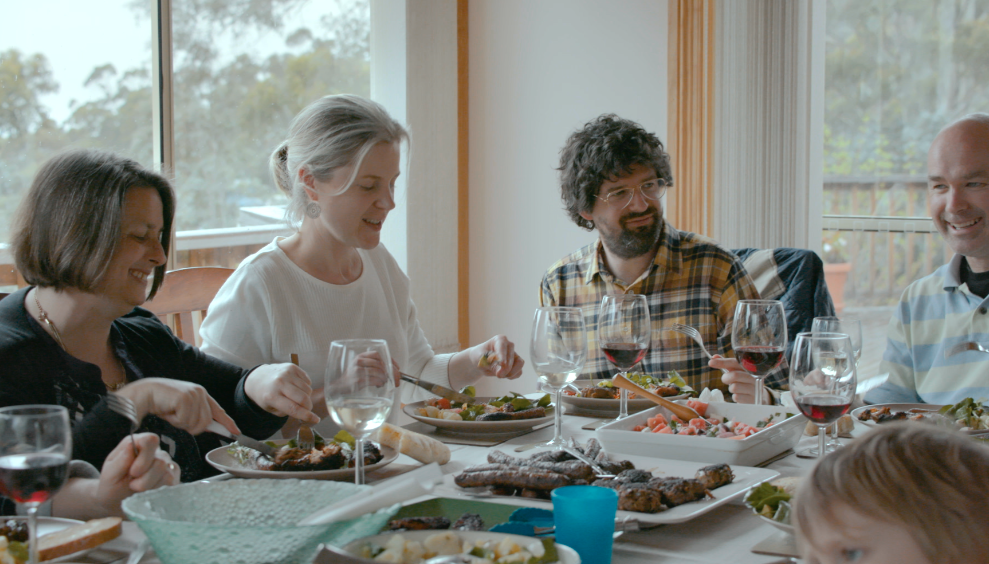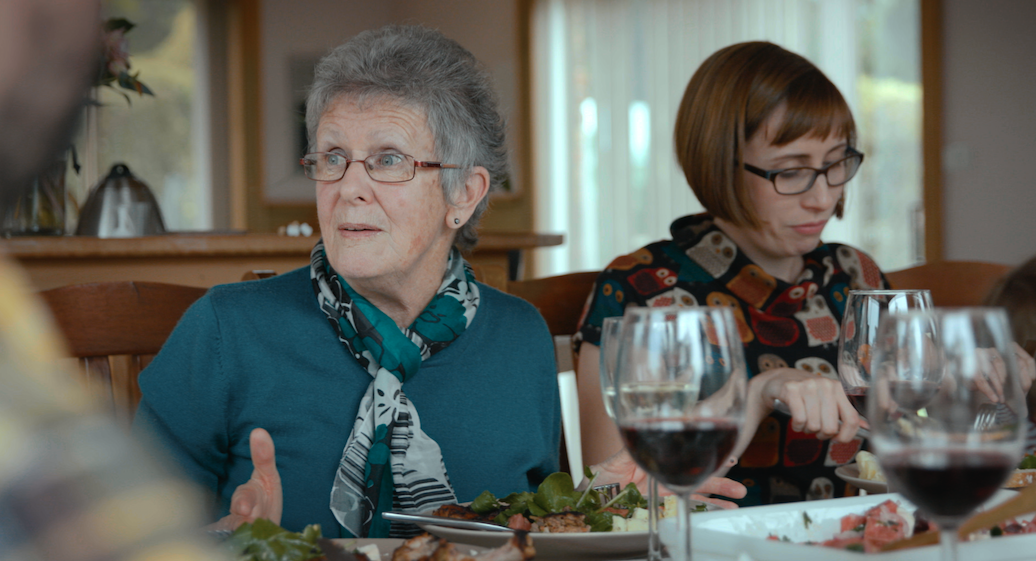Perhaps it takes a certain form of inspired self-indulgence to make a film that focuses on yourself, I’m not sure, but it also takes insight and artistry to convey the interesting in the mundane. Ted Wilson and his family are not interesting, at least not unusually so, yet Under the Cover of Cloud is aware that, as a consequence of history and personal dynamics, every family is interesting. And so, Wilson’s film is one of the most interesting films of the year, his family one of the year’s most interesting subjects.
The film occupies a murky territory between fiction and documentary. John Cassavetes is a notable influence, Wilson has alleged, although Under the Cover of Cloud is not simple mimicry of Cassavetes’ work, it’s something all its own. It is also an irregularity in that it may be wholly unique. I have never seen anything like it.
Wilson, himself the focal point, has lost his job and is in search of direction, and perhaps inspiration. He heads to Tasmania to be with his family and to start work on a new book. “I wanted to write something beautiful about cricket,” he tells us. His intentions in regards to the book are appealingly vague.
Occupying the film alongside Wilson is his own family, including siblings, in-laws, nephews, nieces and his mum, Colleen. They play with the kids, head to the pub for a beer, have a family lunch. Under the Cover of Cloud isn’t burdened with the complications of narrative pressure, rather it relishes the engagement to be found in natural, personal relationships. A threadbare structure involving Wilson’s search for cricket legend David Boon is arguably a parody of a traditional narrative. A plot is simply not important here.
Under the Cover of Cloud will undoubtedly benefit from more than one viewing, if only to appreciate every nuance. Some of that nuance is deliberate and some of it, I suspect, is happy accident. At the premiere, Wilson told the audience that his editor, James Vaughan (a wonderful filmmaker in his own right), was presented with a fifteen-hour cut and preceded to whittle it into something more manageable over a month while participating in a paid drug trial at a hospital. Whatever was cut, Wilson and Vaughan have kept the right material.
I don’t know how this film was made, how Wilson coerced such natural behaviour out of his family while they were being filmed, how much is premeditated, if any, and what of the film is fact and what is fiction. I don’t want to know. To know would be to shatter the illusion, to reveal the mechanism behind the magic.
Wilson says he is part of the Hobart New Wave. Like his film, there’s an ambiguous line between joke and earnestness to the claim. But watching Under the Cover of Cloud, I was struck with the overwhelming impression that Wilson’s film is something entirely new. I imagine that audiences seeing Godard and Truffaut’s early work in the early 60s, or savoured the inaugural films in von Trier and Vinterberg’s Dogme 95 movement, may have felt something similar. It is refreshing in an industry that tends to reward and perpetuate staleness.
Wilson funded the film himself. It is painfully difficult for filmmakers to obtain support from federal and state film funding bodies in Australia, more difficult still when an idea is something that doesn’t adhere to a formula that hasn’t already proven successful. I am not sure whether Under the Cover of Cloud will gain an audience, but it deserves one. Another of the very few films that I have given a perfect score to is Kasimir Burgess’ wonderful movie, Fell. It didn’t receive the attention nor the wide release that other films, films supported by the businessmen that run those funding bodies, enjoy.
Under the Cover of Cloud deserves your attention. It is the best film of the year. I am looking forward to seeing it again, to spending time with Wilson and his family in Tasmania, to appreciating what the film says in moments in which nothing is said. There is one more screening at the year’s Melbourne International Film Festival. You ought to be there.


